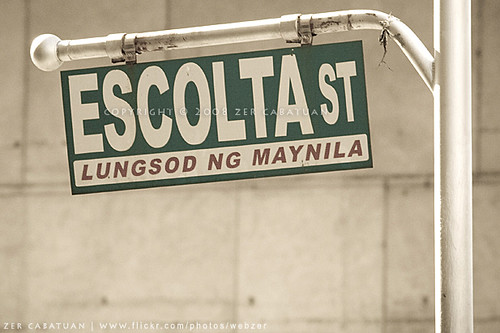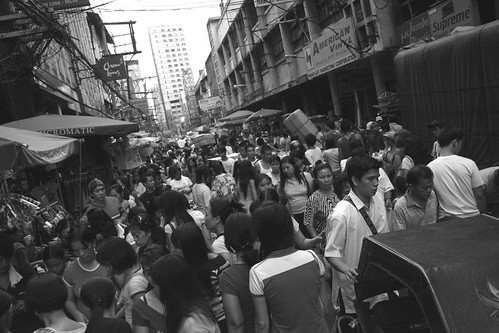Decongesting Metro Manila is one of the government's top priorities. The idea is to allow people to work within the metropolis while living in nearby provinces. As part of this program, five major departments will be transferred to new government centers that will be developed in different parts of the country. Such moves are ill-advised and a waste of public funds, going by the prescriptions from the World Development Report 2009 (WDR 2009), entitled Reshaping Economic Geography. Recall that in her 2008 State-of-the-Nation Address (SONA), Mrs. Arroyo said that preparations for the development of new government centers had started through the transfer of various departments to areas outside Metro Manila. These are: Department of Agriculture to Davao City; Department of Public Works and Highways to Bicol; Department of Tourism to Cebu City; Department of Land Reform to Iloilo City; and Department of Transportation and Communication to Clark.
Metro Manila accounts for a third of the Philippines' economic output. But World Bank economists see nothing wrong with this unbalanced growth. They argue that despite having a high population of 12 million and high incidence of poverty, it makes more sense to increase economic activity in the metropolis rather than to disperse it around in the country.
The report's main message is that economic growth will be unbalanced. "To try to spread out economic activity is to discourage it. But development can still be inclusive, in that even people who start their lives far away from economic opportunity can benefit from the growing concentration of wealth in a few places. The way to get both the benefits of uneven growth and inclusive development is through economic integration."
The report clarifies what economic integration is. "It means one thing to integrate rural and urban areas, and slums with other parts of the cities. It means yet another to integrate isolated and well-connected countries. These notions of economic integration are central to three debates in development - urbanization, territorial development, and international integration."
On urbanization, the report recognizes that each area within a nation has a specific geography, but argues that the principles are quite universal.
"In places mostly rural, governments should be as neutral as possible and should establish the institutional foundation for possible urbanization in some places. Good land policies are central, and so are policies to provide basic social services to everyone."
"In places urbanizing rapidly, government must put in place, in addition to institutions, connective infrastructure so that the benefits of rising economic density are more widely shared.
"In places, where urbanization has advanced, in addition to institutions and infrastructure, targeted interventions maybe necessary to deal with slums. But these interventions will not work unless institutions for land and basic services are reasonable effective and transport facilities is in place."
These principles can also reshape the debate on regional development. The report says that: "the tools of geography can identify which places are poor - the lagging areas - and where most of the poor live. Often, the two are not the same, because the poor have the most reason to move from poor places."
Governments, the WDR argues, can adopt policies to integrate areas within nations, while reducing poverty everywhere. Lagging or poor areas have one thing in common: they are economically far from places that are doing well. But the economic geography of lagging areas is not the same. In some countries, lagging areas, such as China, are sparsely populated; in others, lagging areas, such as Brazil, are densely populated but domestic mobility is not difficult; and in others, lagging areas, such as India, are densely populated but people find it difficult to migrate.
In lagging areas that are sparsely populated, "what makes more sense is to provide basic services everywhere, even if it costs more to reach these distant areas. Encouraging mobility of people is the priority, and institutions that make land markets work better and provide security, schools, streets, and sanitation should be the mainstay of integration policy."
In lagging areas that are densely populated but where mobility is not difficult, both institutions and infrastructure to connect these areas to places that are doing well are necessary for economic integration.
But in lagging areas that are densely populated but where mobility is difficult, the report concludes that: "institutions and infrastructure could be complemented by incentives to producers to local in these lagging states. But these incentives should be carefully designed to avoid offsetting the unifying effects of common institutions and connective infrastructure. A promising possibility is providing incentives to agriculture and allied activities that are appropriate for states that are mostly rural."
There are many policy lessons that may be learned from the report's findings and recommendations. First, it casts serious doubts on the government priority plans to decongest Metro Manila which includes transferring the DAR, DPWH, DOT, DAR, and DOTC to cities in Luzon, Visayas, and Mindanao. Abandoning this plan may provide significant benefit for government workers whose families would have to go through severe adjustment costs. But it is a major setback for the land speculators and contractors and suppliers who would have been favored by the transfer.
Second, the results of the study provides strong arguments against proposals to create more special economic zones in various parts of the country. It could be argued that at present there is already an oversupply of such economic zones. While the economic benefits are fuzzy, these economic zones are costly to develop and maintain - and they enlarge the leaks in an already leaky tax.
Third, it puts pressure on policy makers and administrators to be serious about fiscal equalization especially for social services. Support for access to basic education and basic health care should be more or less equal for every Filipino everywhere - whether in rural communities or urban centers, lagging or leading regions.
Fourth, good governance matters. Institutions should be developed at all the national and subnational levels. Fiscal resources should be properly allocated, projects implemented effectively and in a transparent way, and beneficiaries carefully targeted. The prescriptions apply to both the central government and the 45,000 local governments.
Decongestion
Benjamin E. Diokno
BusinessWorld
14 January 2009
BusinessWorld





